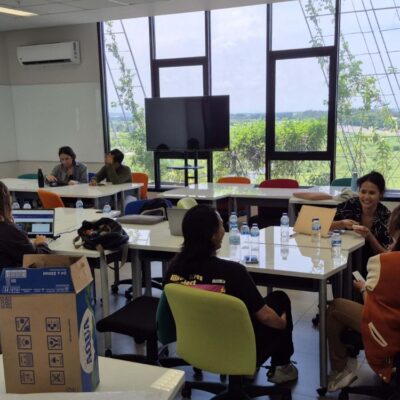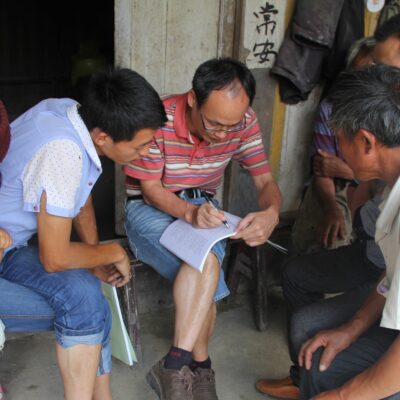The relationship between Australia and China has been under near-constant strain since late 2016, with difficulties sharpening during the COVID-19 pandemic. The relationship is currently at its lowest ebb since the establishment of diplomatic relations in 1972, with scope for matters to further deteriorate.
After some effort (with some initial success) to steer the relationship back onto cordial ground in 2018 and 2019, the start of the major downward spiral can be precisely pinpointed: The Australian government’s April 2020 call for an independent, international inquiry into the origins and spread of COVID-19, which honed in on China’s response to the initial outbreak of the virus. Prime Minister Scott Morrison at the time also called for ‘weapons inspector’-like powers to be given to the World Health Organisation.
The following month Beijing moved to impose an 80.5 percent tariff on Australian barley exports, totalling about 50 percent of Australia’s overall barley trade, over the next five years. Chinese authorities then blacklisted beef imports from four major Australian abattoirs, which reportedly made up approximately 35 percent of total Australian beef exports to mainland China. Over 2020-2021, Beijing continued to steadily mete out trade punishment in a tit-for-tat manner, with tariffs of up to 212 percent placed on Australian wine, as well as informal restrictions on other goods such as thermal and coking coal, cotton, timber and lobsters. Its Ministry of Education issued alerts to students planning to study in Australia, warning of racist attacks, and education agents were encouraged by local authorities not to recommend or advertise Australian institutions. Further, its National Development and Reform Commission indefinitely suspended the China-Australia Strategic Economic Dialogue. That the economic relationship with Australia was being wielded by Beijing as a tool to communicate political dissatisfaction was explicitly acknowledged by the Chinese Foreign Ministry on July 7 2021: ‘We will not allow any country to reap benefits from doing business with China while groundlessly accusing and smearing China’.
The diplomatic relationship remained frozen. A Senate Estimates hearing in late October 2021 confirmed that there had been no direct contact by phone or in person between Australian and Chinese ministers during the year, a new status quo of silence having been established in 2020, despite some attempts by the Australian side to restart dialogue. The last time Prime Minister Morrison communicated with President Xi Jinping was on the sidelines of the G20 in late 2019. The last time an Australian prime minister visited China was in September 2016. As for diplomatic representatives, the Chinese Embassy in Australia has bunkered down, with the then-Chinese Ambassador having reportedly ‘almost entirely retreated from Canberra’s diplomatic social scene’ during 2021, and the Australian Embassy in Beijing has been experiencing pronounced access issues.
As Australia maintains that it has ‘done nothing to injure [the] partnership [with China] – nothing at all]’ and Beijing continues to insist that Australia ‘must take all responsibility’ for the breakdown in relations, with references by either side to the countries’ comprehensive strategic partnership all but disappeared from official rhetoric, the relationship is at a deleterious impasse, with little room for manoeuvre. Inflaming matters is the now-infamous list of ‘14 grievances’ jotted down by a Chinese Embassy staffer and provided to an Australian journalist. Ambassador Graham Fletcher observed in March 2021, ‘Both sides are very determined…because it’s so public, it’s actually harder for either side to make any such adjustments.’
The trade punishment meted out by Beijing over 2020-2021, action not entirely unexpected (especially in view of Beijing’s past actions against, for example, the Philippines, South Korea and Norway), potentially heralds an irreparable breakdown of the separation of economic and political relationships which had theretofore underpinned the Australia-China relationship.
How did Australia-China relations get to this point? The call for a COVID-19 inquiry was not itself the reason, although it accelerated the deterioration.
The mantra justifying the current state of the relationship in Australian circles, from government to the opposition to the commentariat, is that China has changed under President Xi’s leadership and Australia has pushed back as needed.
And indeed China has changed. It has become emphatically more forward-leaning, and, in many respects, aggressive, in its global and domestic posture under Xi Jinping. Beijing’s ‘wolf warrior’ diplomats have belligerently prosecuted the state’s interests overseas, bullying and demanding rather than negotiating and convincing (although, as Peter Martin, defence policy and intelligence reporter for Bloomberg News, reminds us, this is not necessarily new behaviour); foreign nationals, including Australian citizens such as Yang Hengjun and Cheng Lei, have appeared to have been used as political pawns, subject to what seems to be arbitrary detention; the repression of the Xinjiang Autonomous Region’s Turkic Muslim minority continues apace, with the Uyghur diaspora subject to intimidation and harassment; Hong Kong has been stripped of its democratic aspirations; antagonistic behaviour by Chinese vessels and Beijing’s fortification of its presence in the South China Sea continues; and state-sponsored cybersecurity attacks and attempts at espionage and foreign interference have intensified.
With the abolition of constitutional term limits for the state presidency in 2018, Xi setting himself up as a president for life and cultivating a personality cult not seen since Mao, today’s China is likely to continue on this broad trajectory.
Xi’s authoritarianism has confirmed for many in the West that the expectation that China would ultimately liberalise politically as it became more integrated into the international economy is a pipe dream. Australian leaders were never as fervent in their attachment to this belief as their American allies. Nevertheless, they were prone to expressing a certain optimism about where China was heading. Thus in 1983 Prime Minister Bob Hawke said that ‘more and more the Chinese system and its philosophy is becoming compatible with our sorts of values’ and that while ‘it is not going to become a democracy in our sense…in terms of its concepts, and practises it is going to be much more compatible with the way we go about things’.
Australia too, has changed, with respect to its conceptualisation of foreign policy priorities. The announcement of the Australia-United Kingdom-United States (AUKUS) trilateral security partnership on September 16, 2021 sounded the death knell for the decades-long Australian maintenance of a balancing act between its alliance with the US and relationship with China. It was not too long ago that Prime Minister Morrison was continuing to cleave to this formulation, stating that Australia’s preference was ‘not to be forced into any binary choices.’ That choice has now been made.
While AUKUS, having been cobbled together in utmost secrecy, came as a shock to most, the reconceptualisation it represents, the protection and preservation of ideology above all, was telegraphed earlier. The Prime Minister had in a series of speeches and remarks during the first half of 2021 framed the major challenge to global security and stability today as an ideological one—that of competition between liberal democracy versus autocracy—and pressed the case for concerted action amongst friends, partners and allies to preserve the status quo.
In April 2021 during a speech to the 6th Raisina Dialogue of India the Australian Prime Minister said:
There is a great polarisation that our world is at risk of moving towards. A polarisation between authoritarian regimes and autocracies, and the liberal democracies that we love.
This message was reinforced in another major foreign policy speech in June:
Our challenge is nothing less than to reinforce, renovate and buttress a world order that favours freedom.
Meeting this challenge will require an active cooperation among like-minded countries and liberal democracies not see for 30 years.
This was a swing towards embracing the precise framing the Prime Minister had himself previously rejected. This worldview was emphasised on March 7 2022 when the Prime Minister warned of the emergency of a ‘new arc of autocracy… instinctively aligning to challenge and reset the world order in their own image.’
The embrace of ideology as a foreign policy driver on both sides is worrisome for, as influential political scientist Werner Levi noted, ‘ideological conflict is insoluble except through total surrender’. Its ramifications will not be confined to the Australia-China relationship. The greatest danger of this current downward trajectory in Australia-China relations is, as defence strategist Hugh White points out, the risk of war: ‘probably…the biggest war since 1945…And it would very likely become a nuclear war.’
As the preservation of ideology has increased in importance in policy thinking, the China-as-a-military-threat narrative, which had been a staple in public commentary, has in tandem been given ministerial endorsement. Australia had originally deliberately veered away from characterising China as a ‘threat’ in the same manner as the 2018 US National Defense Strategy. Prior to a three-day visit to Washington in February 2018 then-Prime Minister Malcolm Turnbull, consistent with the judgements in the 2017 Foreign Policy White Paper, asserted that Australia took a different position to the US in its assessment of China: ‘We do not describe China as a threat’. Then-Foreign Minister Julie Bishop had been more explicit, stating, ‘[W]e do not see Russia or China posing a military threat to Australia.’ This view had been broadly cleaved to during the beginning of Morrison’s prime ministership. In December 2019 he noted, ‘We just need to understand [China’s rise] in its context. They’re a much bigger country than they used to be with much more influence, and that’s just something the system has to absorb and adapt to,’ saying, ‘worry is not the word’ when it came to China.
The start of a shift from this particular outlook was evident during the launch of the 2020 Defence Strategic Update, which committed AU$270 billion over the next decade on Australian defence capabilities. In his speech marking the launch of the Update, the Prime Minister pointedly remarked, ‘We’re about having the freedom to live our lives as we choose in an open and democratic liberal society, without coercion, without fear’. The rhetoric ramped up in 2021 as the Prime Minister warned, ‘[T]here is much at stake for Australia, for our region, and the world. We are living in a time of great uncertainty not seen since the 1930s’. Later in the year, Defence Minister Peter Dutton used a speech at the National Press Club to communicate the threat to Australia posed by Beijing, stating that ‘the times in which we live have echoes of the 1930’, pointing to China’s large-scale military build-up. He declared that Beijing ‘see[s] us as tributary states’. The speech was ‘strongly’ supported by the Prime Minister, who said, ‘This is not a time where Australia can afford weakness.’
Indeed, the Defence Minister has gone further than his cabinet colleagues in effectively committing Australia to a US-led war should conflict arise with China over Taiwan, saying it would be ‘inconceivable’ that Australia ‘wouldn’t support the US in an action if the US chose to take that action’. He said, moreover, ‘Australia needs to provide a deterrence against actions…because the Communist Party has been very clear about their intent in relation to Taiwan.’ (He has since, however, seemingly assumed a more cautious stance in relation to Taiwan, when asked to restate his position during a March 2022 interview.)
Dutton has thus far been a lone voice in signing Australia definitively up to this undertaking, with the Prime Minister sidestepping questions about his cabinet colleague’s assessment. Assistant Minister for Defence Andrew Hastie has similarly declined to be drawn on the matter and the Foreign Minister has also refused ‘to engage in a hypothetical discussion on the circumstances in which the ANZUS Treaty might apply.’ Yet despite a lack of endorsement, neither has there been a clear rejection of his perspective.
The language used by senior Australian ministers recently has been noticeably more forthright than that deployed by the administration of US President Joe Biden. As a Politico report observed, ‘the Biden administration has shown little interest in stepping back from strategic ambiguity, even as the president himself has hinted at a policy change in his off-the-cuff remarks.’ While it must be acknowledged that the situation remains fluid, Washington’s primary focus has been on speaking out against conflict. National security adviser Jake Sullivan has stated that ‘there’s no reason’ that competition between the US and China ‘has to turn into conflict or confrontation’, and White House Coordinator for Indo-Pacific Affairs Kurt Campbell has said, ‘I think the President, our team, recognises that it will be important to try to establish some guardrails that will keep the relationship from veering into dangerous arenas of confrontation.” The need to establish ‘common-sense guardrails’ was conveyed by President Biden to President Xi during their virtual meeting on November 15.
Throughout recent years, the China challenge has been particular cause for concern for the Australian public—a point not missed by the current federal government. A June 2021 poll by the Australia-China Relations Institute at the University of Technology Sydney showed that 63 percent of Australians believe that the Australian government should take a harder line with respect to its policies dealing with China, with 76 percent expressing mistrust of the Chinese government. Pew Research Centre polls broadly confirm this view, with a sharp upwards shift from 2019 to 2020, maintained in 2021, of unfavourable opinions on China in Australia. Other surveys, such as those conducted by Nine Newspapers and the Lowy Institute, reflect similarly negative sentiments. With a federal election due later this year, it is likely a robust stance on China will be maintained, if not further bolstered. Already, the China challenge has been turned into an election wedge.
Australia’s change in tack on China policy has rendered it somewhat of an outlier in the region as it adopts the most assertive approach of its neighbours. It has, to be sure, had some success in attempts to regionalise a bilateral challenge, signing a Reciprocal Access Agreement with Japan in January this year, a significant step in the Australia-Japan quasi-alliance; inking an AU$1 billion weapons deal with South Korea (reportedly Australia’s largest defence contract with an Asian nation) and upgrading the Australia-South Korea relationship to a comprehensive strategic partnership in December 2021; and elevating the Quad with the US, India and Japan to leader-level talks in March 2021. It might be argued, too, that Australia has provided a blueprint of sorts for countries in the region, with, for example, Singapore joining Australia in passing legislation to counter foreign interference domestically. The qualification here, however, is that the Australian focus in passing the legislation was squarely on countering China, while the same cannot be said for Singapore. The general regional tenor is still one of caution as hedging strategies continue to be embraced in these countries’ own navigation of tensions with China.
During his December 2021 visit to Australia, South Korean President Moon Jae-In made it a point to state that his visit ‘has nothing to do with our position over China.’ He said further, ‘[South] Korea is focused on the steadfast alliance with the US and also with China. We want a harmonised relationship and we want to maintain such a relationship’.
Indian External Affairs Minister Subrahmanyam Jaishankar in September 2021 rejected the notion that the Quad was analogous to a NATO-style grouping: ‘[I]f you look at the kind of issues Quad is focused on today…I can’t see any relationship between such issues and NATO or any other kind of organisations like that.’
Asked what his advice for Australia would be on how to handle China, Singaporean Prime Minister Lee Hsien Loong in June 2021 replied, ‘You need to work with the country…You don’t have to become like them, neither can you hope to make them become like you’.
Japan, while increasingly vocal about pushing back against China, continues to maintain some cooperation in the relationship having, for example, on December 28 2021 agreed with China, amidst territorial tensions, to set up a military hotline between the two countries by the end of 2022.
The story of the Morrison government began emphatically as one that eschewed an ideological interpretation of US-China rivalry but has now ended up embracing it wholeheartedly, in some cases pushing it beyond the US government’s positioning. It remains to be seen whether this shift in Australia’s diplomatic gears will ultimately stand the country in the best stead to navigate the new strategic environment in which it finds itself. It also remains to be seen how Australia and China might find a new balance in their relationship. The only certainty for the moment is that more trials lie ahead.
Image: Australia’s Prime Minister Scott Morrison, London, 2021. Credit: Number 10/Flickr. (This image has been cropped.)




